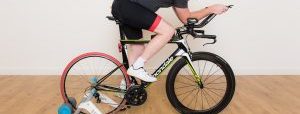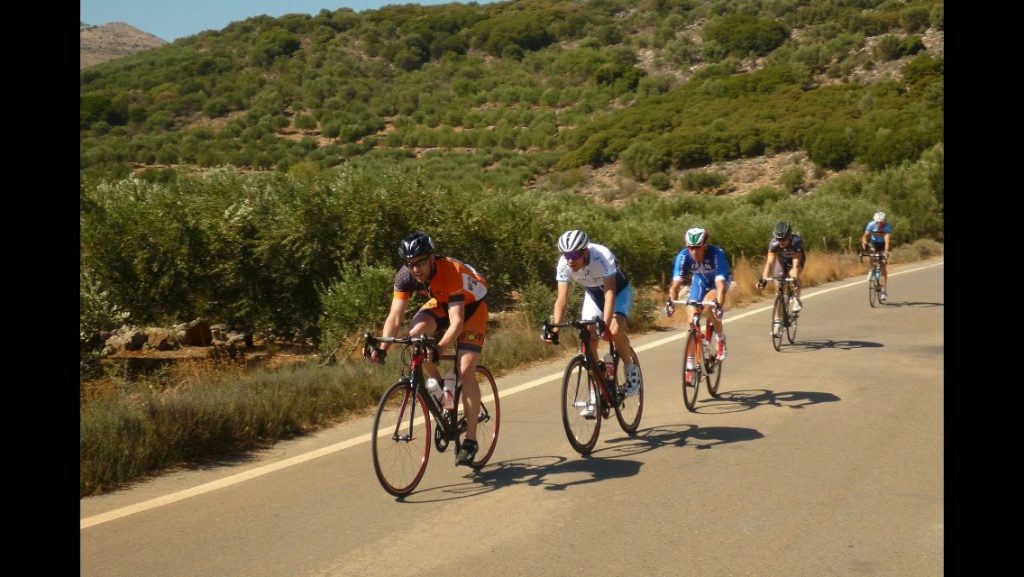3 parts
- Part 1 – Load Management
- Part 2 – Strength and Mobility
- Part 3 – When/Why to Seek Advice

3 Ways to Solve Knee Injuries in Cycling – Part 1
Introduction
Knee pain is one of the most common injuries in cycling, accounting for between 30-60% of all injuries, depending on what you read. In my experience, it is certainly the most common complaint I see and deal with.
Why is Knee Pain so common in cyclists?
The knees are a common site of injury in many sports, but are certainly commonly injured in cycling, but why? It is combination of factors, as with most injuries. However, the knee in cycling has 2 distinct disadvantages:
- High Loads: It’s charged with transmitting the very repetitive and powerful muscular forces generated above in the glutes, quads and hamstrings.
- Movement Patterns: It doesn’t get to choose it’s own range of movement or movement pattern.
The powerful forces clearly have the ability to stress the various tissues of the knee, however, compared to weight bearing activities, these are actually relatively low. However, they are very repetitive, and it is this combination that really brings out the problems.
The second issue is where we can have more influence and is where a large portion of your knee pain solution can be found. What I mean by this is that your position on the bike forces the knee to transmit the forces in a given position, pattern and range of motion (ROM). Your knee can’t choose. Even if the forces are placing stress on tissues that are injured or sensitive, there is not much the knee can do, which is why it runs into these chronic pain problems so often in cycling. On a more positive note, this is something we can influence to help you knee pain.
1 – Load Management
The most underestimated tool in dealing with injuries. Chronic injuries are a loss of homeostasis in the tissues, or the sensitivity of the tissues. Restoring the homeostasis is the goal and this requires some honesty in managing load relative to the perception of pain.
In some cases there is tissue loading that is mechanically driven resulting in an injury. Overloading the tissues causes a downward spiral of tissue damage, incomplete recovery, more loading, more incomplete recovery and so on.
Appropriate load management means that you progressively load the tissues allowing positive adaptation and recovery from the injury.
This seems obvious, but it is all too common to see people who have ignored early warning signals resulting in them digging a pretty deep hole to climb out of by the time they seek help.
This is strategy is an attempt to influence the ‘high loads’ issue discussed above. It is really important, but will work best when combined with the other strategies mentioned below.
Though this ‘mechanical model’ seems fairly easy to understand and logical, this scenario is less common than you might think. More common in chronic pain is what I would call a ‘sensitivity model’.
I think most of us would assume our injury falls under the mechanical model and the part it may. However it is more common to see what I would describe as the sensitivity model.
Repetative irritation can cause a tissue to become ‘sensitised’. Once the tissue is sensitised it takes less irritation for the tissue to output a signal. In an a chronic injury that output is commonly interpreted by the brain as pain. This is the reason why when some injuries are investived with scans nothing is found.
In a similar way to mechanical loading, helping to desensitise a tissue requires appropriate and progressive loading. Other ways to desensitise a tissue include the use of heat/ice, gentle movement, gentle massage, in fact, it can be anything that causes an ‘input’ that the brain perceives as different to the painful input.
It’s beyond the scope of this blog to fully explain this, but it’s important to think beyond mechanical injury. If you have questions, leave a comment or feel free to email – coach@summitcyclecoaching.co.uk
In Summary
Being honest with yourself and the presence of pain/injury will likely limit the severity of the injury and speed up the overall recovery. In most cases, stopping riding altogether is not necessary. Though load management will be a part of the recovery, if you find yourself in a hole you want to get out of, stop digging!
This is not the whole solution and in parts 2 and 3 we will look at the other key components that will need to be considered alongside load management.

